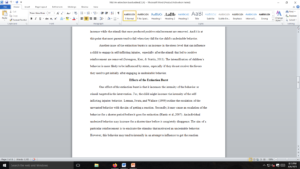Improvements in care
Imagine that you are a hospital administrator at the Sunlight Hospital in California. The main complaint among the patients is the quality of care. Your job is to understand the state of the hospital, create value, increase efficiency, and turn the facility into a local hospital of choice. Whenever you are making visits in various wards to meet the employees and the patients, you hear how the patients love the hospital, but they would like to see certain improvements in care. The employees seem to be very busy executing their duties and not interacting much with the patients. The hospital board has asked you to compile a report of your findings and suggested strategy for achieving the hospital’s current goals.
Note: You may create or make all necessary assumptions needed for the completion of this assignment.
Write a 4–6 page paper in which you:
- Classify five measurements of quality of care in a hospital, and justify the major reasons why you believe these measurements matter to patients in their process of choosing a hospital for emergency or inpatient care.
- Specify four main features in health care organizations that can be used to design a successful quality improvement plan. Articulate the significant manner in which the specified features can lead to failure or success of quality of care in Sunlight Hospital.
- Suggest the salient reasons why quality of care would add value to and create a competitive advantage for the Sunlight Hospital. Justify your response.
- Go to Basic Search: Strayer University Online Library to find four recent (within the last five years) quality academic resources for this assignment. Note: Wikipedia and other websites do not qualify as quality academic resources.
This course requires the use of Strayer Writing Standards. For assistance and information, please refer to the Strayer Writing Standards link in the left-hand menu of your course. Check with your professor for any additional instructions.
The specific course learning outcome associated with this assignment is:
- Propose a quality improvement plan for a hospital that will add value and create a competitive advantage.
Answer preview
The second quality metric I would focus on is the number of readmissions recorded at Sunlight hospital (Hanefeld et al., 2017). Readmission refers to a situation where a previously discharged patient, finds themselves back at a health care facility seeking treatment, within a specified period after getting released. Most of the readmissions witnessed in hospitals are preventable. The fact that staff members at Sunlight hospitals prioritize performing their duties rather than take care of patients means that readmission rates will be quite high. When health care professionals interact with patients, they get the chance to do a thorough check-up of patients before discharging them. Doing this prevents them from discharging patients too early, an aspect that raises readmission rates at the hospital.
[1322 Words]

Improvements in care





